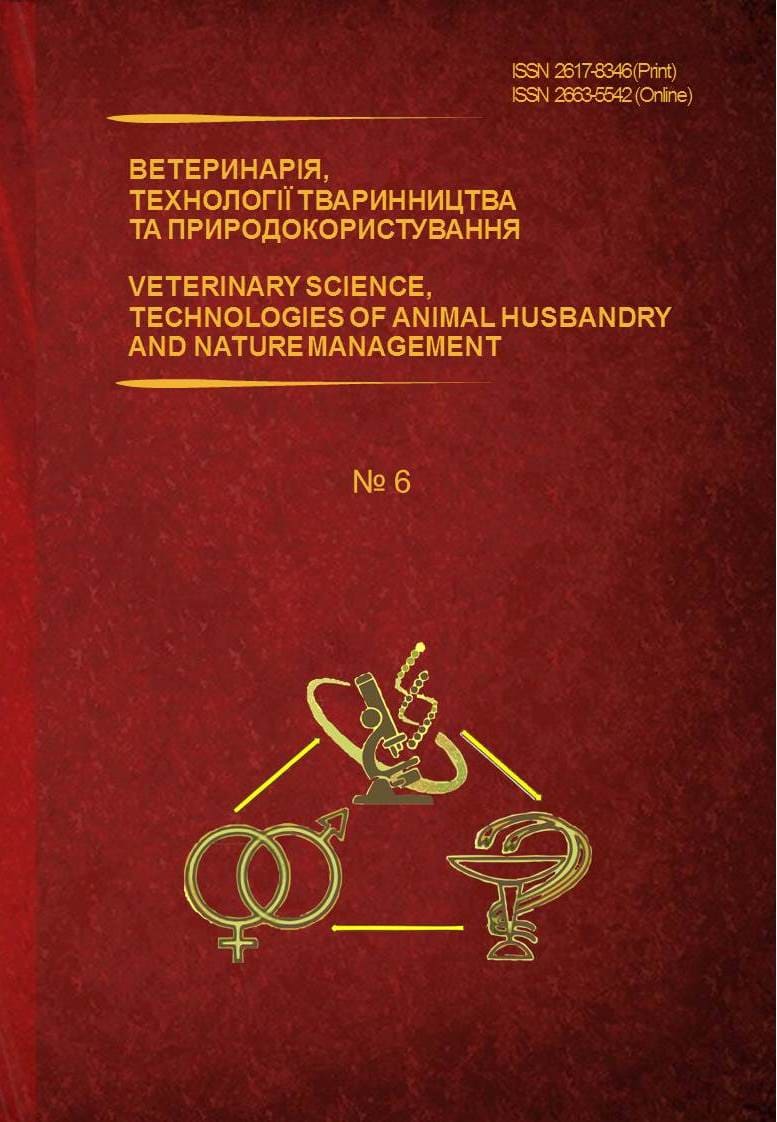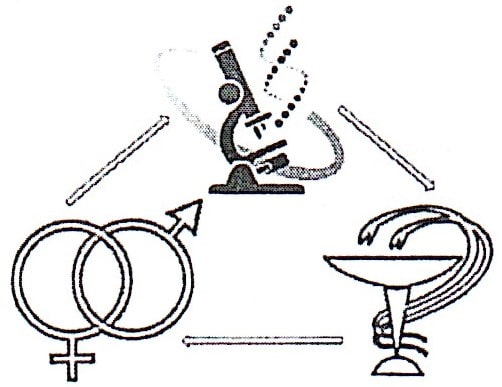Визначення ступеня свіжості м’яса равликів за вмістом ферменту редуктази
Анотація
Актуальною проблемою в Україні є пошук і використання альтернативних джерел тваринного білка. В цьому аспекті, завдяки своїм харчовим цінностям, зацікавленість викликає м’ясо равликів, яке складається із білку, незамінних для людини вітамінів і амінокислот та не містить холестерину й шкідливих жирів.
У системі державного контролю України за дотриманням законодавства щодо харчових продуктів відсутня комплексна система контролю безпечності та якості м’яса равликів. А отже, питання щодо визначення його безпечності, а також і ступеня свіжості, є актуальним завданням.
Розроблений метод визначення свіжості м’яса равликів за вмістом в ньому ферменту редуктази з 0,1 % водним розчином метиленового блакитного, може використовуватися у виробничих лабораторіях на потужностях з виробництва, переробки, реалізації і зберігання м’яса равликів, а також у державних лабораторіях Держпродспоживслужби України. Окрім того, дані, що отримані стануть базовими для розробки нормативних документів в системі державного контролю за безпечністю м’яса равликів в Україні.
Завантаження
Посилання
Adeyemo, A. I., & Adeola, A. J. (2007). Effects of food treatment on the nutritive value and sensory properties of giant snail Archarchatina marginata meat. Journal of animal and veterinary advances, 6 (5), 608-612.
Adeyeye, E. I., & Afolabi, E. O. (2004). Amino acid composition of three different types of land snails consumed in Nigeria. Food Chemistry, 85(4), 535-539. DOI: 10.1016/S0308-8146(03)00247-4.
Adeyeye, S. A. O., Bolaji, O. T., Abegunde, T. A., & Adesina, T. O. (2020). Processing and utilization of snail meat in alleviating protein malnutrition in Africa: a review. Nutrition & food science., 50(6), 1085-1097. DOI : 10.1108/NFS-08-2019-0261.
Agengo, F. B., Onyango, A. N., Serrem, C. A., & Okoth, J. (2020). Effect of Fortification with Snail Meat Powder on Physicochemical Properties and Shelf-life of Sorghum-wheat Buns. Current Nutrition & Food Science, 16 (5). 749-756. DOI: 10.2174/1573401315666190719162012.
Babalola, O. O. (2016). Performance, nutrient digestibility, carcass analysis and organoleptic assessment of snailets of African giant land snail (Archachatina marginata) fed diets containing graded levels of dried lettuce. Animal feed science and technology, 216, 169-175. DOI: 10.1016/j.anifeedsci.2016.03.013.
Balashov, I. (2016). Okhrana nazemnykh mollyuskov Ukrainy. Kiev, 272 p. [in Ukrainian]
Bogatko, N. M., Vlasenko, V. V., Golub, O. Y., Konstantіnov, P. D., & Nazarenko, L. V. (2011). Zdіysnennya derjavnogo veterinarno-sanіtarnogo naglyadu ta kontrolyu na potujnostyah z pererobki ribi ta riboproduktіv u vіdpovіdnostі do mіjnarodnih vimog : metodichnі rekomendatsіi. Bіla Tserkva. 154 p. [in Ukrainian]
Cherevonogі molyuski jivі harchovі. Tehnіchnі umovi: DSTU 7821:2016. Kiyv : DP «UkrNDNTS», 10 s. (Natsіonalniy standart Ukrainy).
Diarra, S. S. (2015). Utilisation of snail meal as a protein supplement in poultry diets. Worlds poultry science journal. 41(3). 547-552. DOI: 10.1017/S0043933915002159.
Drozd, L., Ziomek, M., Szkucik, K., Paszkiewicz, W., Mackowiak-Dryka, M., Belkot, Z. & Gondek, M. (2017). Selenium, copper, and zinc concentrations in the raw and processed meat of edible land snails harvested in Poland. Journal of veterinary research. 61 (3), 293-298. DOI: 10.1515/jvetres-2017-0039.
DSTU 4895:2007 Riba ta ribnі produkti. Metod bakterіoskopіchnogo otsіnyuvannya. Kyiv: Derjspojivstandart Ukraїni, 7 s. (Natsіonalniy standart Ukrayni).
Duyar, H. A., Bilgin, O., & Bilgin, S. (2018). Weight and Length Relationships (WLRs) and Meat Yield of Brown Garden Snail, Helix aspersum Muller, 1774 and Turkish Snail, Helix lucorum Linnaeus, 1758 (Mollusca: Gastropoda: Helicidae) in the Sinop Province, Turkey. Alinteri journal of agriculture sciences. 33(2). 183-192. DOI: 10.28955/alinterizbd.427314.
Felici, A., Bilandzic, N., Magi, G. E., Iaffaldano, N., Fiordelmondo, E., Doti, G., & Roncarati, A. (2020). Evaluation of Long Sea Snail Hinia reticulata (Gastropod) from the Middle Adriatic Sea as a Possible Alternative for Human Consumption. Foods, 9 (7), 905. DOI: 10.3390/foods9070905.
Formiga-Cruz, M., Allard, A. K., Conden-Hansson, A. C., Henshilwood, K., Hernroth, B. E., Jofre, J., Lees, D. N., Lucena, F., Papapetropoulou, M., & Rangdale, R. E. (2003). Evaluation of potential indicators of viral contamination in shellfish and their applicability to diverse geographical areas. Applied and environmental microbiology, 69 (3), 1556-1563. DOI:10.1128/AEM.69.3.1556-1563.2003.
Ikauniece, D., Jemeljanovs, A., Sterna, V., & Strazdina,V. (2014). Evaluation of nutrition value of roman snail's (Helix Pomatia) meat obtained in Latvia. 9th baltic conference on food science and technology - food for consumer well-being: foodbalt, 28-31.
Jess, S., & Marks, R. J. (1998). Effect of temperature and photoperiod on growth and reproduction of Helix aspersa var. maxima. Journal of agricultural science, 130(3), 367-372. DOI: 10.1017/S0021859698005346.
Kirkan, S., Goksoy, E. O., & Kaya, O. (2006). Detection of Listeria monocytogenes by using PCR in Helix pomatia. Turkish journal of veterinary & animal sciences. 30(4), 375-380. Retrieved from https://dergipark.org.tr/en/download/article-file/132578.
Kusakina, O. S., Glotova, I. A., & Gluschenko, A. A. (2014). Perspektivyi razvedeniya i promyishlennoy pererabotki vinogradnyih ulitok. Sovremennyie naukoemkie tehnologii, 5-1, 188-189. Retrieved from http://www.top-technologies.ru/ru/article/view?id=33829 (data obrascheniya: 19.09.2020).
Madoz-Escande, C., & Simon, O. (2006). Contamination of terrestrial gastropods, Helix aspersa maxima, with Cs-137, Sr-85, Ba-133 and Te-123m by direct, trophic and combined pathways. Journal of environmental radioactivity, 89(1), 30-37. DOI: 10.1016/j.jenvrad.2006.03.004.
Manzl, C., Krumschnabel, G., Schwarzbaum, P. J., & Dallinger, R. (2004). Acute toxicity of cadmium and copper in hepatopancreas cells from the Roman snail (Helix pomatia). Comparative biochemistry and physiology c-toxicology & pharmacology, 138 (1), 45-52. DOI: 10.1016/j.cca.2004.04.008.
Mezquita, P. C., Madariaga, P. E., & Segovia, Y. M. (2009). A practical approach to preparation and meat preservation by refrigeration or freezing of the land snail (Helix Aspersa Müller). Journal of Muscle Foods, 20, 401-419. DOI:10.1111/j.1745-4573.2009.00156.x.
Okafor, A. C., & Ogbo, F. C. (2020). Virulence potentials of Bacillus strains recovered from edible snails and survival during culinary preparation. Food control, 108. Article 106814. DOI: 10.1016/j.foodcont.2019.106834.
Parlapani, F. F., Neofitou, C., & Boziaris, I. S. (2014). Microbiological quality of raw and processed wild and cultured edible snails. Journal of the science of food and agriculture, 94 (4), 768-772. DOI: 10.1002/jsfa.6438.
Paszkiewicz, W., Szkucik, K., Ziomek, M., Gondek, M., & Pyz-Lukasik, R. (2018). Occurrence of Salmonella spp. and Listeria spp. in snail meat. Medycyna weterynaryjna-veterinary medicine-science and practice, 74 (2), 110-113. DOI: 10.21521/mw.6074.
Paszkiewicz, W., Szkucik, K., Ziomek, M., Pyz-Lukasik, R., Drozd, L. & Belkot, Z. (2018). Variability of microbial contamination of edible snail meat depending on species and place of their collection. Medycyna weterynaryjna-veterinary medicine-science and practice, 74 (9), 591-598. DOI: 10.21521/mw.5970.
Paszkiewicz, W., Ziomek, M., Szkucik, K., & Mackowiak-Dryka, M. (2014). Production and quality of snail meat. Medycyna weterynaryjna-veterinary medicine-science and practice, 70 (11), 673-679.
Petropavlovska, S. E., Zemlyak, V. O., Petropavlovska, S., & Zemliak, V. (2019). Otsіnka іnfrastrukturi rinku gelіtsekulturi ta mojlivostey realіzatsії eksportnogo potentsіalu. Shіdna Evropa: ekonomіka, bіznes ta upravlіnnya, 3 (20), 115-120. [in Ukrainian]
Radzki, R. P., Bienko, M., Polak, P., Szkucik, K., Ziomek, M., Ostapiuk, M. & Bienias, J. (2018). Is the consumption of snail meat actually healthy? An analysis of the osteotropic influence of snail meat as a sole source of protein in growing rats. Journal of animal physiology and animal nutrition, 102 (2), 885-891. DOI: 10.1111/jpn.12851.
Radzki, R. P., Bienko, M., Polak, P., Szkucik, K., Ziomek, M., Ostapiuk, M., & Bienias, J. (2018). Is the consumption of snail meat actually healthy? An analysis of the osteotropic influence of snail meat as a sole source of protein in growing rats. J Anim Physiol Anim Nutr., 102, e885– e891. DOI: 10.1111/jpn.12851.
Serrano, S., Medina, L. M., Jurado, M., & Jodral, M. (2004). Microbiological quality of terrestrial gastropods prepared for human consumption. Journal of food protection, 67(8), 1779-1781. DOI: 10.4315/0362-028X-67.8.1779.
Subhan, A., Yuwanta, T., Zuprizal., & Supadmo, S. (2015). The USE of pomacea canaliculata snails in feed to improve quality of alabio duck (anas plathyrinchos borneo) meat. Journal of the indonesian tropical animal agriculture, 40(4), 238-244. DOI: 10.14710/jitaa.40.4.238-244.
Temelli, S., Dokuzlu, C., & Sen, M. K. C. (2006). Determination of microbiological contamination sources during frozen snail meat processing stages. Food control, 17(1), 22-29. DOI: 10.1016/j.foodcont.2004.08.004.
Yatsenko, I. V., Zabarna, I. V., Bohatko, N. M., Rodionova, K. O., & Palii, A. P. (2020). Vyznachennia stupenia svizhosti miasa ravlykiv za vmistom amiaku ta solei amoniiu z reaktyvom Neslera. Modern science: problems and innovations. Modern science: problems and innovations. Abstracts of the 4th International scientific and practical conference. SSPG Publish. Stockholm, Sweden, 32-40. Retrieved from https://sci-conf.com.ua.
Yatsenko, І. V. (2017). Hihiiena i ekspertyza kharchovykh tvarnykh hidrobiontiv ta produktiv pererobky. Chastina 1. Hihiiena ta ekspertyza rybopromyslovoi produktsii: pidruchnyk. Kharkіv : «Disa plyus», 680 р. [in Ukrainian]
Ziomek, M., Szkucik, K., Mackowiak-Dryka,M., Paszkiewicz, W., Drozd, L., & Pyz-Lukasik R. (2017). Veterinary regulations for obtaining and processing edible snails. Medycyna weterynaryjna-veterinary medicine-science and practice, 73(12), 819-825. DOI: 10.21521/mw.5796.
Переглядів анотації: 1260 Завантажень PDF: 630





